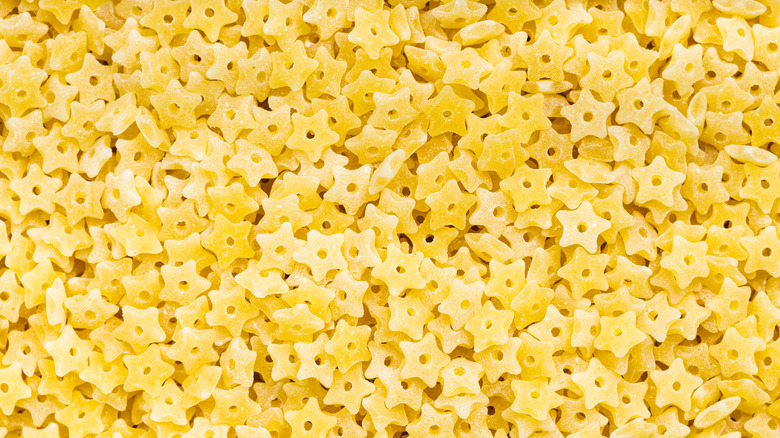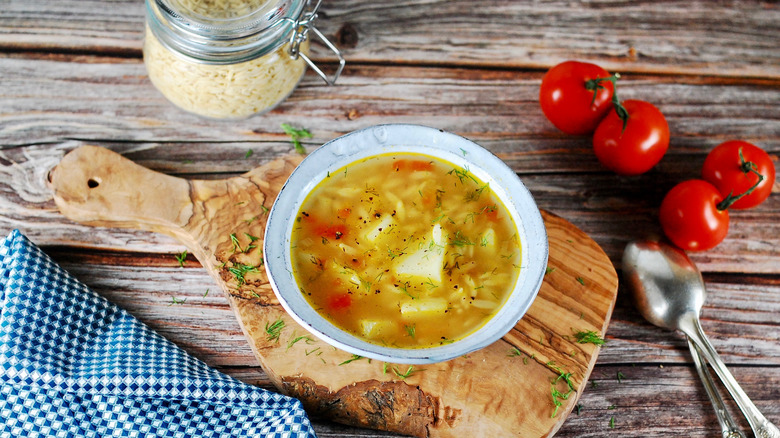Pastina Is A Broader Pasta Category Than You Might Think
From spaghetti and meatballs to macaroni and cheese, some of the best comfort foods are made with pasta. Psychologies states that we might crave pasta when we're feeling low because we associate it with happier memories, bringing back that positive nostalgia through food. So, if one of your favorite childhood meals was mom's chicken noodle soup, you may be more likely to crave it as an adult after a tough day at work.
There are a few different words for the tiny pasta shapes typically found in soups: Pastina, pastini, and pastine all refer to the same type of noodle, according to The Spruce Eats. The pasta is an ideal addition to broth, tomato soup, or vegetable noodle soup as an easy-to-digest meal when you're feeling under the weather. It also works great as an introductory pasta for small children or tossed with some butter and cheese in a bowl for an easy meal.
There's not one defined shape
Pastina translates to "little pasta" in Italian, according to Allrecipes. Most pasta under one-quarter inch in size qualifies as pastina, per The Spruce Eats, though the noodles can be a variety of shapes. Some of the most common shapes are miniature macaroni, shells, tubes, orzo, or stars — often called "stelline." Some even consider couscous to be part of the pastina family, according to Delighted Cooking.
Orzo is one of the most common varieties of pastina. The thin, oval-shaped pastina is often used in soups, pasta salad, or as an alternative to risotto, states Allrecipes. Pasta e fagioli, a traditional Italian dish of beans and pasta, uses ditalini or small shells to complement the flavor of the rich broth.
These tiny noodles aren't well-suited for chunkier sauces, like Bolognese or marinara, as they tend to get lost among the heavier ingredients. Instead, they pair nicely with a thinner broth, perfect for a warm meal on a cool evening.

